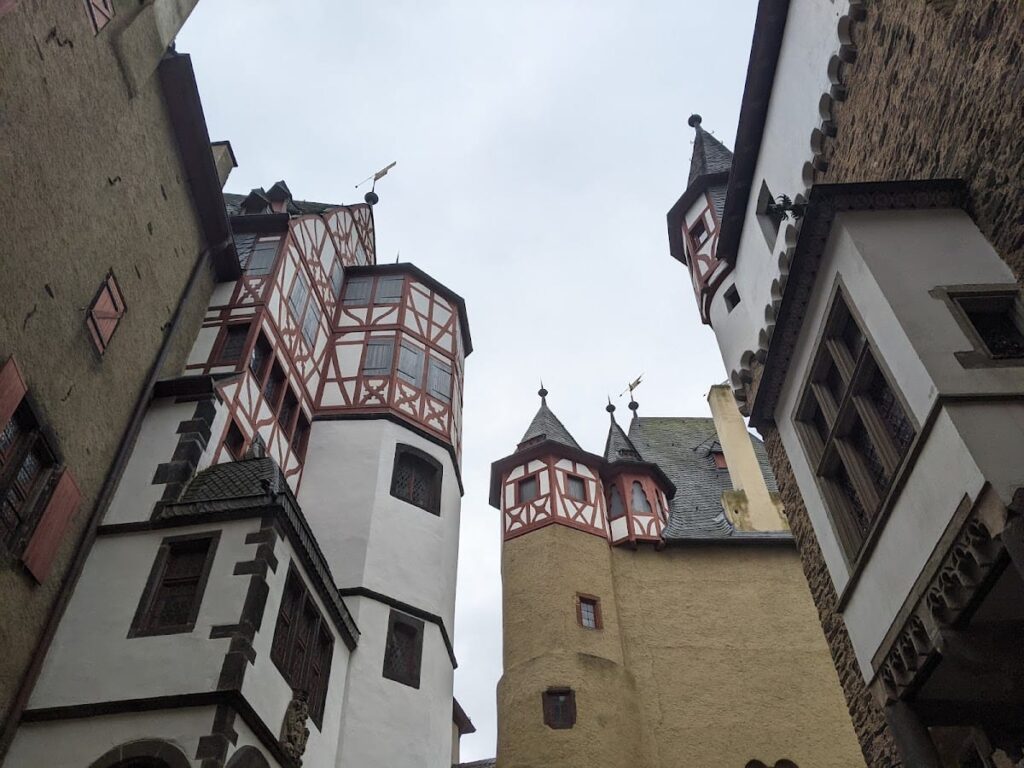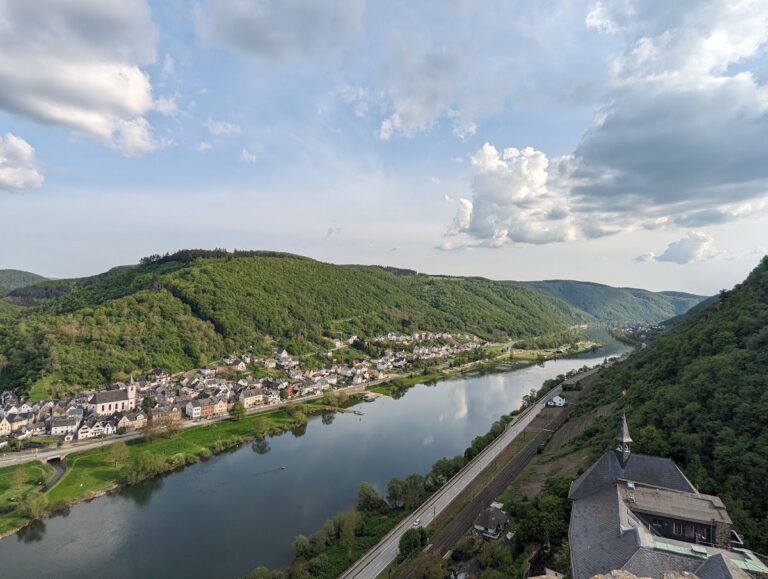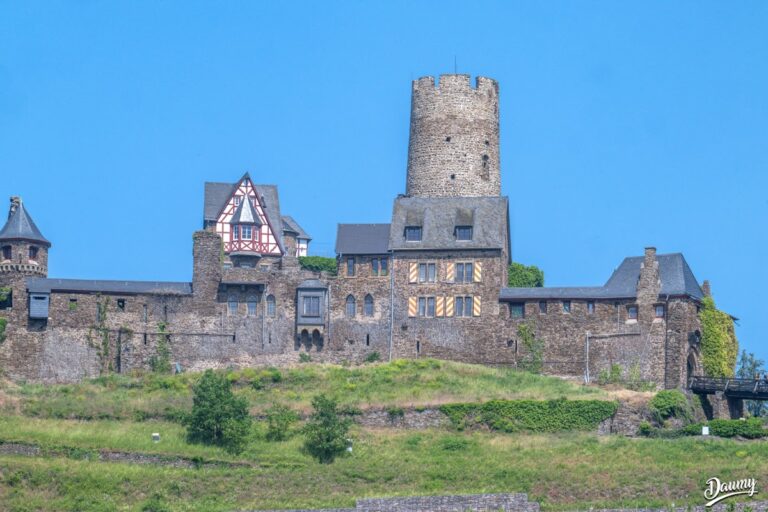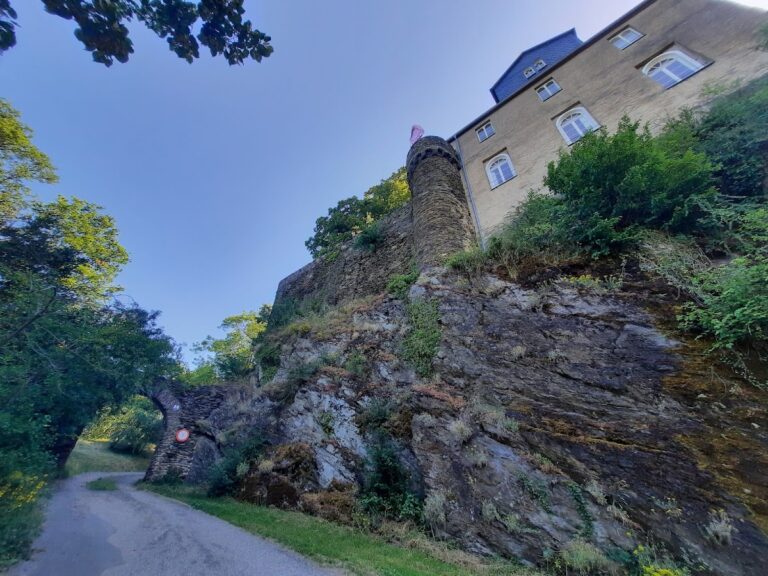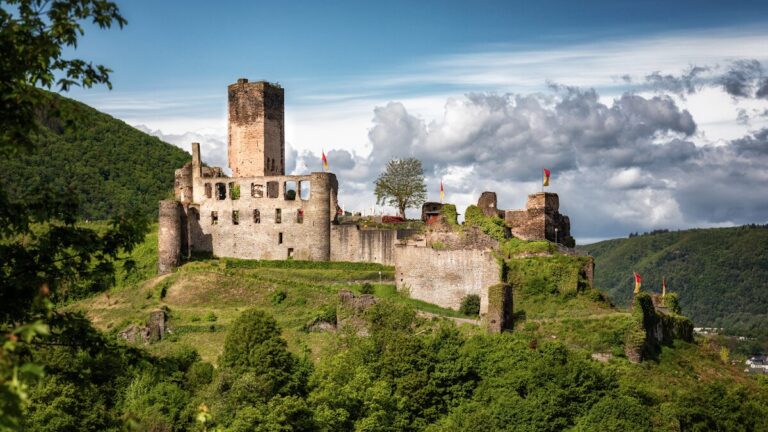Eltz Castle: A Historic Ganerbenburg in Germany
Visitor Information
Google Rating: 4.6
Popularity: Very High
Google Maps: View on Google Maps
Official Website: burg-eltz.de
Country: Germany
Civilization: Medieval European
Remains: Military
History
Eltz Castle stands on a 70-meter-high rock spur overlooking the Elzbach valley near Wierschem in Germany. It was likely constructed in the early 12th century by the noble Eltz family to oversee a trade route linking the Moselle River with the Maifeld region. The castle’s first recorded mention dates to 1157 in a donation deed by Emperor Frederick Barbarossa, naming Rudolfus de Elze as its lord.
Before 1268, the castle and its lands were divided among three brothers—Elias, Wilhelm, and Theoderich—who established three family branches. Each branch took residence in separate towers within the castle, creating a Ganerbenburg, a jointly owned fortress. These branches became known as Eltz-Kempenich, Eltz-Rübenach, and Eltz-Rodendorf, named after their heraldic symbols and estates.
Between 1331 and 1336, the castle was involved in the Eltz Feud, resisting Archbishop Baldwin of Trier’s territorial expansion. Baldwin built the siege castle Trutzeltz nearby and bombarded Eltz Castle with catapults. After a two-year siege, the defenders surrendered, and the Eltz family lost their imperial immediacy, becoming vassals of Trier.
From the late 15th to the 17th centuries, the castle underwent major expansions. The Rodendorf houses were built between 1490 and 1540, the Rübenach house was completed in 1472 and expanded around 1520, and the Kempenich houses were constructed from 1604 to 1661. These additions reflected the architectural styles and needs of the three family branches.
Notable family members include Jakob III von Eltz, Archbishop and Elector of Trier in the 16th century, and Philipp Karl von Eltz, Archbishop and Elector of Mainz in the late 17th and early 18th centuries. The castle survived the Palatinate War of Succession intact, thanks to Hans Anton zu Eltz-Üttingen, a French army officer.
During the French occupation from 1794 to 1814, the castle was confiscated but later returned to Count Hugo Philipp zu Eltz. In 1815, he acquired sole ownership by buying out the other family branches. In the 19th century, Count Karl zu Eltz led a careful restoration from 1845 to 1888, investing a significant sum to preserve the castle.
A fire in 1920 damaged parts of the castle, including the southern Kempenich house, chapel, archive, and upper floors of the Rodendorf house. Restoration was completed by 1930. Between 2009 and 2012, extensive structural stabilization and restoration addressed threats to the castle’s tall buildings, funded by federal and state sources.
Remains
Eltz Castle occupies an elliptical rock spur surrounded on three sides by the Elzbach river, resulting in an unusual oval layout. The complex consists of multiple independent residential towers grouped by the three family branches: Kempenich, Rübenach, and Rodendorf. This arrangement reflects its function as a Ganerbenburg, with separate living quarters but shared spaces like the great hall and chapel.
The oldest structure is the Romanesque bergfried, or keep, known as Platt-Eltz. Its lower five floors date from the early 12th century, while the upper Gothic section was added between 1252 and 1300. The castle’s roofs are covered with Mayen slate, restored during recent renovations.
The Rübenach house, completed in 1472 and expanded around 1520, is an eight-story building featuring a 19th-century armory room. This room contains original medieval weapons, including chainmail, helmets, and firearms from the 15th and 16th centuries. The house also includes a chapel with late Gothic stained glass and frescoes from the 15th and 16th centuries. Its vaulted cellar houses the treasure chamber, which holds over 500 art objects spanning from the 12th to 19th centuries.
The Rodendorf houses, built between 1490 and 1540, have a courtyard façade with a vaulted porch supported by three pillars. A 19th-century Madonna mosaic is embedded in the outer wall. Inside, the large hall known as the Rittersaal was used for family gatherings and is decorated with baroque and rococo furnishings. A rare Renaissance bed from 1525 is also preserved here.
The Kempenich houses, constructed from 1604 to 1661, feature timber framing with carefully articulated facades. An octagonal stair tower rises above a well that supplied water to the entire castle. Basalt pillars support a vaulted porch bearing inscriptions dating the construction to 1604 and 1661. This section suffered fire damage in 1920 but was restored by 1930.
The castle contains about 20 medieval garderobes, or toilets, equipped with rainwater flushing systems. One such garderobe in the Rübenach house dates from the 15th century. Interior decoration includes valuable artworks such as Lucas Cranach the Elder’s oil painting “Madonna with Child and Grapes,” Flemish tapestries from the 16th and 17th centuries, and a Liber Vitae illumination attributed to Michael Pacher or his school.
The treasure chamber in the Rübenach house’s vaulted cellar holds a rich collection of gold and silverwork from Augsburg, a 1.10-meter statue of Saint John of Nepomuk by Franz Christoph Mäderl (1752), a circa 1600 sculpture of Diana on a stag, ceremonial vessels, and porcelain from China, Delft, and Westerwald. The collection also includes clocks from the 16th to 18th centuries and drinking vessels shaped as grotesque figures.
The castle’s chapel, originally Gothic, was extended with an oriel window around 1664. The nearby siege castle Trutzeltz, built by Archbishop Baldwin during the 14th-century siege, survives as a ruin with some walls still standing.
Recent restoration efforts between 2009 and 2012 reinforced the castle’s structure using stainless steel anchors up to 25 meters long. These works also conserved historic plaster, half-timber facades, and Gothic wall paintings. The outer walls and ancillary buildings, including the Goldsmith’s House and the Old Bastion, have been maintained to preserve the castle’s integrity.




